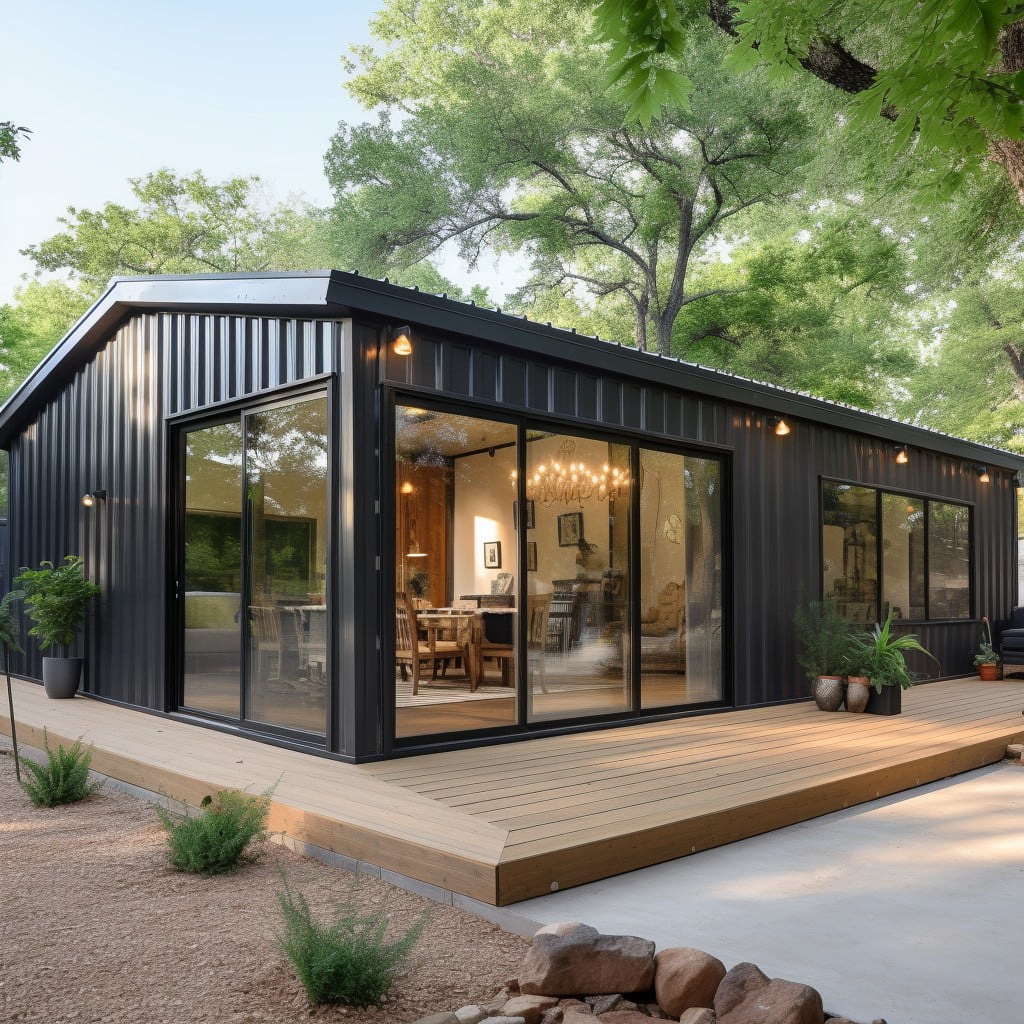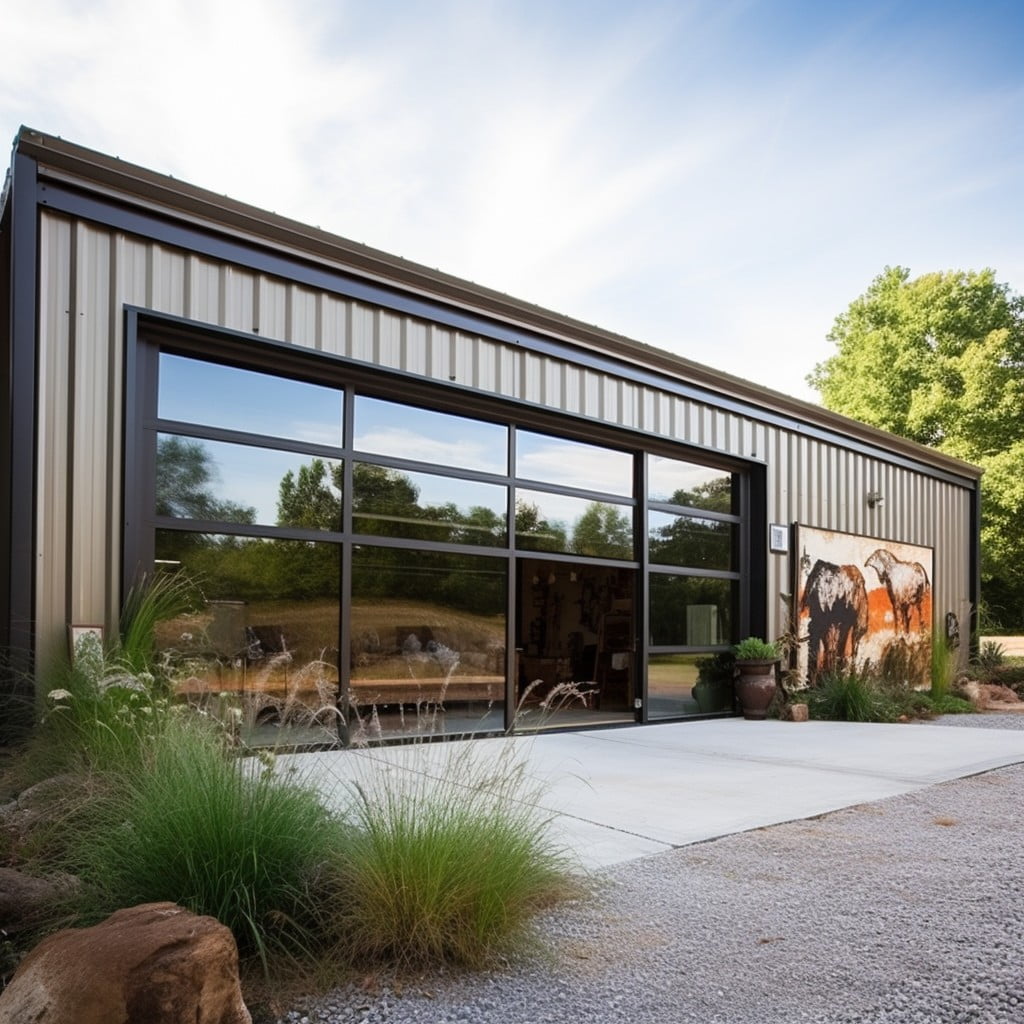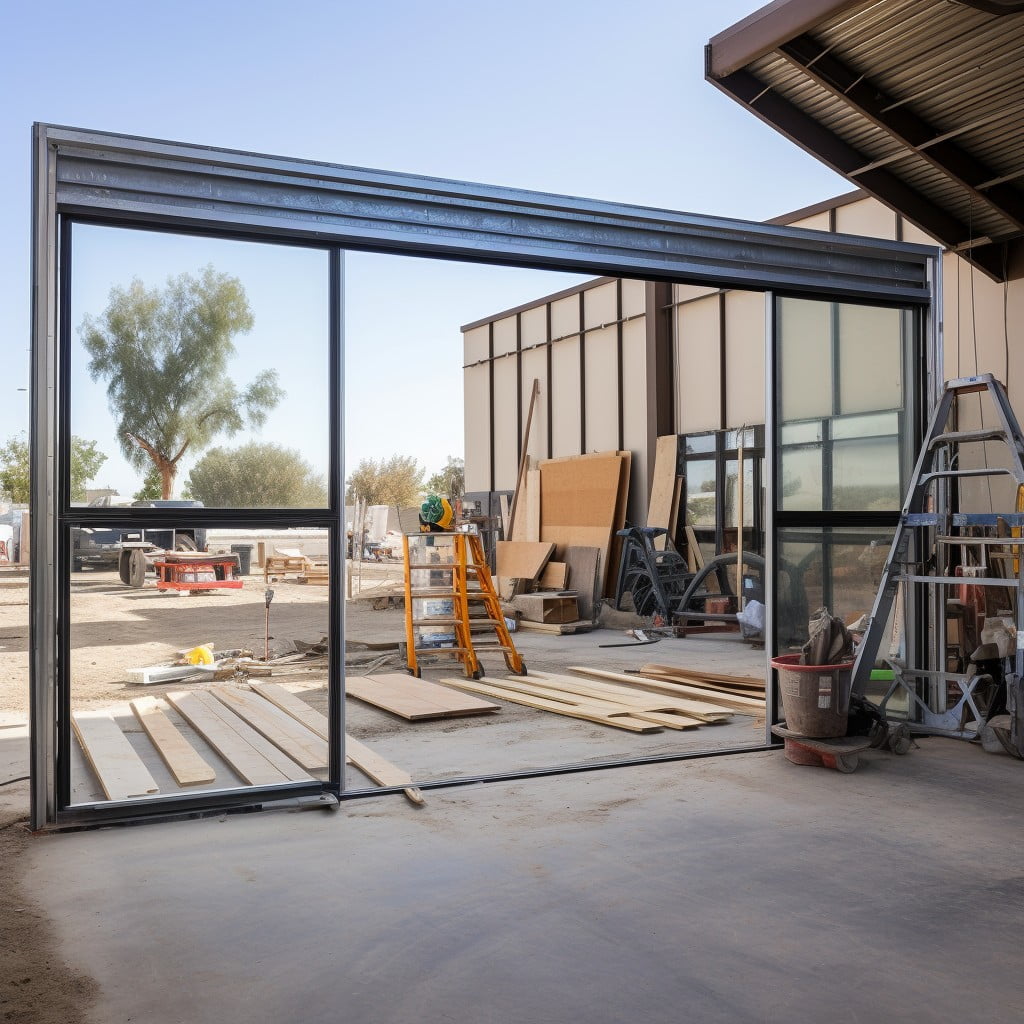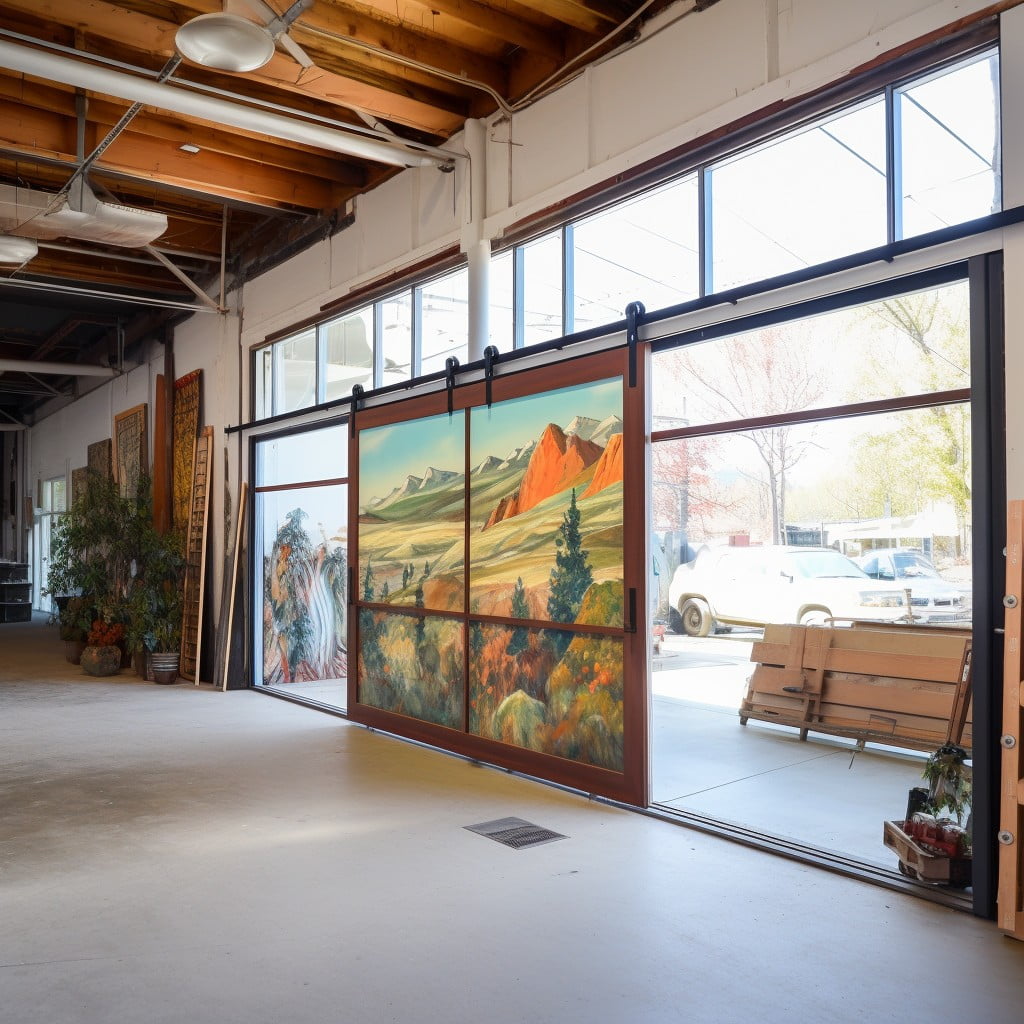Discover the straightforward process of installing sliding doors on a metal building to optimize space, improve accessibility, and enhance aesthetic appeal.
Sliding doors are a practical addition to any metal building, offering easy access and saving space. If you’re looking to install one, you’re in the right place. This article will guide you through the process step-by-step, from choosing the right door and preparing the opening, to the actual installation and final touches.
Whether you’re an experienced DIY enthusiast or a beginner, you’ll find this guide helpful. So, let’s get started on this journey to enhance your metal building with a new sliding door.
Key takeaways:
- Stud placement and load-bearing capacity are crucial for installation.
- Consider material, size, style, and installation method when choosing sliding doors.
- Have sliding door kit, tools, fasteners, safety equipment, and sealant.
- Follow step-by-step installation process for marking, fitting, and securing the door.
- Regularly clean, lubricate, and inspect sliding doors for proper maintenance.
Understanding Your Metal Building’s Structure

Before diving into the installation process, it’s crucial to understand the underlying architecture of your metal building. A foundational knowledge will support you to make informed decisions and ensure the integrity of the structure stays intact during the installation.
1. Stud Placement: Metal buildings, like their non-metal counterparts, use studs in their construction – vertical pieces that offer support to the walls. Knowing their location is vital as they’ll serve as the frame for your sliding door.
2. Load Bearing Capacity: Not all walls in your structure are designed to bear the heavy burden of a sliding door. Identifying load-bearing walls is crucial before installation.
3. Architectural Design: Your edifice’s design could influence the type of sliding door you select and how you install it. Some designs may even limit the installation of sliding doors to certain areas.
4. Measuring Properly: Precise measurements of height, width, and depth are critical. These can influence not just the door size, but the type and quantity of installation materials required.
Remember, getting a firm grasp on these aspects will not only ease the installation process, but also enhance the longevity and functionality of your sliding door.
Choosing the Right Sliding Doors for Your Metal Building

When selecting sliding doors, four key aspects should be considered: material, size, style, and installation method.
1. Material: Most sliding doors for metal buildings are made of either steel or aluminum. Both are durable and require minimal maintenance. Steel offers more strength but is heavier, while aluminum is light and resistant to corrosion.
2. Size: The size of your sliding doors should be proportional to the dimensions of your metal building. Large buildings will often accommodate bigger doors which can be more functional for large-scale storage or operations.
3. Style: While function is vital, aesthetic should not be entirely overlooked. A sliding door can add visual appeal to your building. There are a multitude of styles available, from paneled to flat, rough to polished finishes.
4. Installation Method: It’s crucial to choose a door that aligns well with your building’s specific attributes. Seek doors explicitly designed for metal buildings to ensure compatibility. Individual designs offer unique installation methods, affecting ease and speed of installation.
Remember, taking the time to select the right sliding doors greatly influences how effectively they serve their purpose while maintaining a pleasing aesthetic.
Materials Required for the Installation

To ensure a successful installation, you will need to have the following materials on hand:
- Sliding Door Kit: This should include all the necessary parts like the metal door, rollers, track, and a door handle. Ensure it matches with the dimension of your metal building.
- Tools: Basic hand tools like a drill, screwdriver, level, and pencil will be required for the installation process.
- Fasteners: You’ll need some high-quality screws and bolts to secure the track and door to your metal building.
- Safety Equipment: Always wear gloves, safety glasses, and closed-toe shoes during the installation process to minimize injury risk.
- Sealant: It is used to close gaps between the door and frame to prevent weather elements and pests from getting inside.
Remember, the choice of material often dictates the durability and function of your sliding door. Prioritize quality to ensure a longer lifespan and lesser repairs.
Steps to Install Sliding Doors On a Metal Building

Before starting the installation, gather all necessary tools, including a drill, screws, level, and tape measure. Ensure the door frame is square and the dimensions match your doorway for a seamless fit.
1. Mark the Position: Identify where the top track of the door will be installed. The correct position correlates with the size of the door.
2. Install the Top Track: Secure the top track in the marked position using screws, ensure it is level.
3. Fit the Bottom Track: This should mirror the position of the top track. Check alignment with a plumb bob.
4. Install Side Rails: Attach the door’s side rails to the tracks. These should be perpendicular to the tracks.
5. Assemble the Door: Position the door within the frame and ensure it aligns correctly with the rails.
6. Install Door onto Track: Slide the door onto the track and adjust as required.
7. Secure the Door: Attach the door to the frame with hinges or rollers. Ensure smooth operation by adjusting as necessary.
8. Install Door Hardware: Attach handles, locks or any other included door hardware.
9. Final Verification: Open and close the door several times to ensure proper installation.
Ensure to follow the manufacturer’s instructions, which may specify different steps based on the door design.
Maintaining Sliding Doors On Metal Buildings
Regular maintenance is imperative to ensure the longevity and proper functioning of your newly installed sliding doors. Here are some tips:
1. Regular Cleaning: Wipe the doors clean with a mild detergent and a soft cloth to remove dirt and grime. This prevents buildup which can interfere with the door’s operation.
2. Lubrication: Apply a quality lubricant on the tracks and rollers to keep them moving smoothly. This should be done at least twice a year.
3. Safety Checks: Check brackets, bolts, and hinges for any signs of damage or wear. Tighten any loose elements to maintain a secure fit.
4. Professional Inspection: It’s wise to have a professional inspection annually. They can identify and fix potential issues before they lead to significant damage.
Remember, well-maintained sliding doors will not only look great, but also function efficiently, enhancing the overall usability of your metal building.
Troubleshooting Common Problems With Sliding Doors On Metal Buildings
Occasionally, issues may arise that need prompt attention to keep your sliding doors functioning effectively. Here are common ones and how to rectify them:
1. Difficulty in Sliding: Largely due to debris or dirt build-up in the track, causing friction. Regular cleaning can avert and solve this issue.
2. Door Misalignment: This can occur because of repeated use or changes in the building’s structure. To fix, adjust the rollers or replace if worn out.
3. Damaged Track: Over time, the track can get damaged. It might require welding repairs, or in severe cases, replacement.
4. Noise During Operation: A noisy door often indicates friction or a problem with the rollers. Regular greasing should eliminate unnecessary sounds.
5. Gaps in the Door: If there are gaps, check the adhesion between the door and the building. Use suitable filler or sealant as needed.
Safety Measures During Installation and Maintenance
A clear focus on safety is essential during both the installation and maintenance of sliding doors on a metal building.
1. Proper Protective Gear: Always wear safety glasses, construction gloves, and sturdy footwear to protect oneself against potential injuries.
2. Adequate Lighting: Ensure that the workspace has sufficient lighting to avoid mishaps while handling tools or materials.
3. Safe Use of Tools: Any power tools necessary for the installation should be used strictly as per the manufacturer’s guidance. Unplug them when they are not in use.
4. Ladder Safety: Assuming doors are elevated, using a stable ladder is a must. Always maintain three points of contact (two hands and one foot, or two feet and one hand) when using a ladder.
5. Handling of Glass: If your sliding door has glass elements, handle them with care to prevent shattering.
6. Regular Maintenance Checks: After the doors are installed, regular checks must be conducted to identify any issues which could lead to accidents, such as a stuck or imbalanced door.
7. Lock Out Tag Out (LOTO) systems: While performing maintenance or repair, use LOTO systems to ensure that the doors cannot move unexpectedly, causing possible harm.
8. Training: Familiarize yourself with all functionalities of the sliding door, including the safety lock system and emergency exits, if provided.
Remember, your safety should never be compromised for the sake of speeding up a task.
FAQ
Can I install a sliding door myself?
Yes, with the right tools and materials, you can install a sliding door yourself in a day, with pre-hung glass doors being the most straightforward albeit slightly pricier option.
What materials and tools are required for the installation of sliding doors on a metal building?
For the installation of sliding doors on a metal building, essential materials and tools include the door kit, measuring tape, level, drill, metal screws, saw, and safety equipment like gloves and goggles.
How does the installation of sliding doors affect the structural stability of a metal building?
The installation of sliding doors does not compromise the structural stability of a metal building, provided they are correctly installed within pre-engineered frames which distribute load evenly.
What common challenges can be anticipated when adding sliding doors to existing metal structures?
Anticipated challenges when adding sliding doors to existing metal structures can include ensuring correct measurements, managing structural load changes, dealing with potential weather sealing issues, and complying with fire safety standards.
Recap




